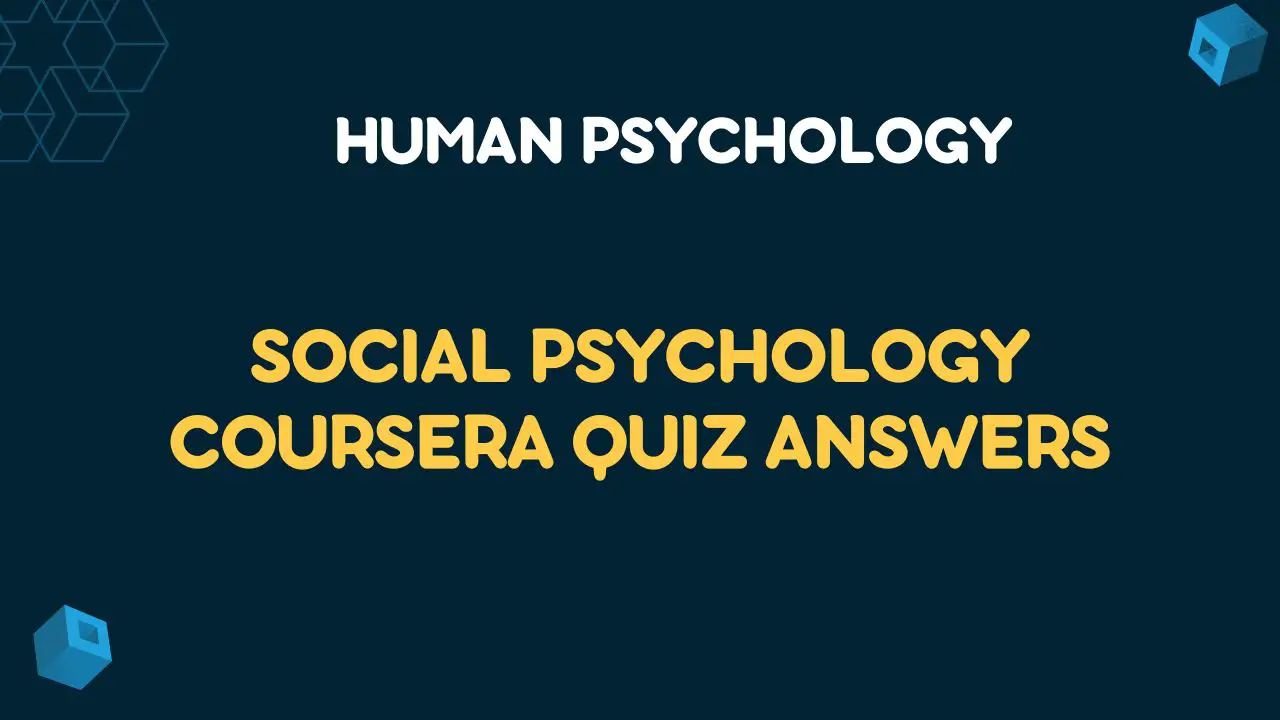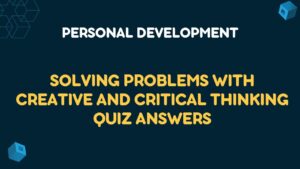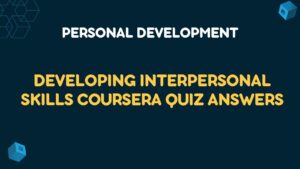Table of Contents
Get All Weeks Social Psychology Coursera Quiz Answers
Week 6: Social Psychology Coursera Quiz Answers
Quiz 1: Honors Assignment: Small Group Discussion
Question 1: If your group used springboard questions provided by Professor Plous, which of the following sets were they drawn from? Check all that apply.
2.Racism and Racial Inequality
3.Sexism and Gender Inequality
4.Gender Identity and Sexual Orientation
Question 2: If your group used springboards, how useful was it to have these discussion questions?
ViewQuestion 3: Overall, how enjoyable was your group discussion?
ViewQuestion 4: Overall, how educational was your group discussion?
ViewQuestion 5: Would you suggest keeping this assignment as part of the class?
ViewQuestion 11: Did you learn anything valuable about social psychology from the discussion?
ViewQuestion 12: Did you learn anything valuable about yourself from the discussion?
ViewQuestion 13: Did you learn anything valuable about other people or cultures from the discussion?
ViewWeek 7: Social Psychology Coursera Quiz Answers
Question 1: According to Robert Cialdini’s article on protecting the environment, there are two types of norms: _______ norms (which refers to what people typically do) and _______ norms (which refers to what people typically approve or disapprove).
ViewQuestion 2: People who score high on a scale of _______ try to be what others expect them to be.
ViewQuestion 3: As mentioned in one of the video lectures, psychologists and psychology textbooks generally focus on two types of empathy: _______ (which involves perspective-taking) and _______ (which involves emotional matching).
ViewQuestion 4: Of the following factors, _______ is most often cited as “very important for a successful marriage,” according to research discussed in the lecture on romantic attraction and close relationships.
ViewQuestion 5: In a book-length study published by Robert Rosenthal and Lenore Jacobsen (1968) on the “Pygmalion effect,” Rosenthal and Jacobsen reported that certain students “bloomed” academically as a result of:
ViewQuestion 6: _______ refers to the belief that other people are paying more attention to our appearance and behavior than they really are.
ViewQuestion 7: Philip Zimbardo developed a model of deindividuation in which certain “input variables” lead to certain “output behaviors.” Which factor below is an input variable in Zimbardo’s model?
ViewQuestion 8: Research using the experimental procedure developed by Solomon Asch in the 1950s has found that conformity levels are highest among people living in:
ViewQuestion 9: In Shelley Taylor and Susan Fiske’s (1978) study on the effects of salience, observers sat near two actors who held a conversation. The results of this study showed that when observers were seated facing an actor, they tended to rate that person as being more _______ than the other actor.
ViewQuestion 10: If you want survey results to be representative of a particular population, it’s best to use _______ to make sure that everyone in the population being studied has an equal chance of being included in the research.
ViewQuestion 11: According to Professor Plous, the best available evidence suggests that if Stanley Milgram’s controversial research on obedience could be conducted today, the level of obedience found would probably be _______ what Milgram found in the 1960s.
ViewQuestion 12: In a study on obedience, Charles Hofling and his associates (1966) found that when an unknown doctor asked nurses to administer twice the maximum dose of an unknown drug, _______ nurses obeyed the doctor’s order. Hofling et al. also found that when other nurses and student nurses were asked to predict whether they would follow the doctor’s order in such a situation, _______ predicted that they would refuse.
ViewQuestion 13: As explained by Professor Jerry Harvey in an assigned video, the Abilene Paradox occurs when group members are in _______ with one another and _______.
ViewQuestion 14: Although the Stanford Prison Experiment is a classic study in social psychology, it took place before modern-day ethical guidelines. Indeed, if Professor Plous were to propose a “Wesleyan Prison Experiment” identical to the original study, his university’s Institutional Review Board (IRB) would reject the proposal, because modern IRBs never approve studies that:
ViewQuestion 15: Correlational research is very useful, but it cannot tell us with certainty whether a score on one variable tends to:
ViewQuestion 16: Professor Dumbledore wants to randomly assign 40 students in equal numbers to live in one of four dormitories: Gryffindor, Hufflepuff, Ravenclaw, or Slytherin. If Professor Dumbledore uses Research Randomizer, the best approach would be to generate _______ in which 1=Gryffindor, 2=Hufflepuff, 3=Ravenclaw, and 4=Slytherin.
Note: An example of a set with unique numbers is 4, 2, 1, 3, and an example with non-unique numbers (in which some numbers repeat) is 2, 2, 4, 1.
ViewQuestion 17: Manuela used to love mountain climbing, and she would often describe mountain climbing as “the safest fun there is.” After a widely publicized mountain climbing accident in her country, however, Manuela decided that the chances of death were too high to continue mountain climbing. Manuela’s change in perception is most likely a function of:
ViewQuestion 18: When Juan’s boyfriend broke up with him, Juan thought he’d be too upset to date anyone for at least a year. A month later, however, Juan began dating someone he met at a local coffee shop. Juan’s overestimation of how long it would take him to recover emotionally is an example of:
ViewQuestion 19: Susie wants to earn a Course Certificate in this class, so she cheats and thinks to herself, “Everyone else is probably cheating too, so I’m not doing anything wrong.” Social psychologists would say that Susie’s overestimation of cheating is an example of:
ViewQuestion 20: Barnabus is a door-to-door salesperson. After he persuades Emerson to buy a set of kitchen knives, he mentions that there is a $10 charge called the “sales completion fee.” Instead of refusing, Emerson agrees to pay the extra fee. Social psychologists refer to the compliance tactic that Barnabus used as the:
ViewQuestion 21: If you’re like most of the people studied by social psychologist Michael Norton, you’ll experience the greatest happiness by:
ViewQuestion 22: Lois is concerned about climate change and wants to persuade her son and daughter to each buy an electric car that emits less carbon than a gas-powered car. If her son doesn’t care about climate but her daughter does, Lois should use _______ with her son and _______ with her daughter.
ViewQuestion 23: Luna chose to attend her cousin’s high school graduation ceremony instead of her best friend’s 21st birthday party. Bored at the ceremony, Luna thought to herself, “I don’t think the party would have been much fun anyway.” Luna’s thought was most likely a result of:
ViewQuestion 24: Suppose Gitanjali lays out four cards in front of you, each with a drawing of a fruit on one side and an animal on the other side, and the cards facing up show a bright red apple, an orange, a dog, and a cat. Gitanjali then tells you that any card with a red fruit on one side has a dog on the opposite side. Which of the four cards are potentially capable of showing that Gitanjali is wrong?
ViewQuestion 25: Suppose that 10 years from now, Coursera has grown so large that it’s become a country with its own team playing in the World Cup. In a match against Italy, the teams are tied with one minute left in the game, and Coursera’s star player scores a goal that leads Coursera to win. Which statement made by the Italian goalie would show counterfactual thinking?
ViewQuestion 26: Maya is part of a six-student group trying to make her college campus more environmentally sustainable. To be most productive, her group will probably do best if members work:
ViewQuestion 27: When Irma sees her child Horace start to steal an apple from a grocery store, she’s privately amused but slaps Horace on the hand to teach him that it’s wrong to steal. In social psychological terms, this slap is a form of:
ViewQuestion 28: Niu explains his failing grade of “F” on a biology test as the result of the exam room being too hot (a situational explanation), but a classmate says it’s because Niu is “dumb as an ox” (a dispositional explanation). What social psychological dynamic would account for the gap between their opinions?
ViewQuestion 29: Nancy, a White college student, claims that “all Asians are smart and hardworking.” This statement illustrates a bias that social psychologists call:
ViewQuestion 30: Suppose the Coursera University Advisory Board is considering whether to recommend allowing a robot to teach a course on robotics. Each board member initially thinks the idea is probably worth trying, but after openly sharing their views and weighing both the negative and positive aspects of the idea, all board members become even more supportive of the idea than they were originally. This shift in support is best explained by:
ViewQuestion 31: The group-serving bias involves a tendency to make _______ attributions for outgroup members’ positive behaviors and _______ attributions for outgroup members’ negative behaviors.
ViewQuestion 32: In their pioneering research on bystander intervention, Bibb Latané and John Darley found that in general, people were most likely to help a stranger in an emergency when they:
ViewQuestion 33: As Professor Plous mentioned in his lecture entitled The Triggers of Aggression, research on _______ suggests that simply seeing a weapon can increase the chances that someone will behave aggressively.
ViewQuestion 34: On the whole, suicide terrorists are more likely than other people to be:
ViewQuestion 35: Research on the catharsis hypothesis suggests that playing violent video games is usually:
ViewQuestion 36: In his study of attitudes and behavior, Richard LaPiere (1934) found that: (1) _______ of the American business owners he surveyed said they would serve Chinese customers, and (2) _______ of the proprietors actually served the Chinese couple with whom LaPiere traveled.
ViewQuestion 37: The findings in Leon Festinger and Merrill Carlsmith’s (1959) well-known $1/$20 cognitive dissonance experiment suggest that participants in the $1 condition _______ carrying out the experimental tasks _______.
ViewQuestion 38: As mentioned in the assigned reading, playing video games instead of studying the night before an important exam is an example of:
ViewQuestion 39: In his conformity research using a line judgment task, Solomon Asch found that when experimental participants were faced with _______ incorrect answer, participants conformed in the direction of the incorrect answer on _______ of the critical trials.
ViewQuestion 40: In Stanley Milgram’s famous obedience experiments in which a “teacher” was ordered by the experimenter to shock a “learner,” the level of obedience was highest when the teacher was physically _______ the experimenter and _______ to the learner.
ViewQuestion 41: If two people, Prisoner A and Prisoner B, are trapped in a classic Prisoner’s Dilemma, the worst outcome for Prisoner A would occur if:
ViewQuestion 42: As mentioned in the lecture on “thin slices,” research has found that people can detect a stranger’s ________ with better than chance accuracy when shown a black-and-white facial photo of the stranger for as little as a twentieth of a second.
ViewQuestion 43: According to the assigned reading “How Groups Intensify Decisions,” one effective way to prevent groupthink is by:
ViewQuestion 44: On average, the amount of genetic similarity is greatest between:
ViewQuestion 45: Compared with women, men tend to be _______ at falling in love and ________ at falling out of love.
ViewQuestion 46: In John Darley and Daniel Batson’s study of seminary students who were about to give a speech, the factor that had the largest effect on whether students helped a needy man before the speech was whether:
ViewQuestion 47: Ronald Comer and James Laird (1975) found that when people who expected to _______ were later given a choice between eating the worm or judging the weight of different cups, most people chose to _______.
ViewQuestion 48: When negotiation expert William Ury speaks of “the third side” in a conflict, he’s referring to:
ViewQuestion 49: In his replication of Stanley Milgram’s famous obedience studies, Jerry Burger (2009) examined whether women and men differed in how likely they were to deliver electric shocks to another person beyond 150 volts. He found that women were _______ men to continue beyond 150 volts.
ViewQuestion 50: Researcher John Gottman has found that marriages are likely to remain happy and healthy as long as wives and husbands have at least _______ with each other for every _______ they have
ViewConclusion:
In conclusion, the realm of social psychology serves as a captivating window into the intricacies of human behavior within the context of social interactions. Throughout our exploration of this field, we have delved into the profound impact of social influence, the nuances of group dynamics, and the profound role of culture and societal norms in shaping our thoughts and actions.
Find More Related Quiz Answers >>
Collaborate Effectively for Professional Success Coursera Quiz Answers
Developing Interpersonal Skills Coursera Quiz Answers
Solving Problems with Creative and Critical Thinking Quiz Answers




